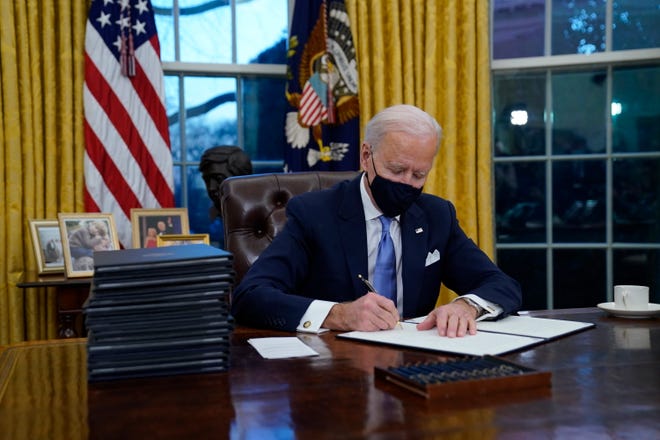

A Southern California high school teacher was placed on leave after a video recorded by a student showed her chanting and dancing around her classroom in a faux Native American headdress.
In the viral video, which was posted Wednesday, the teacher, who works at Riverside Unified School District, dons a feathered headdress and chants "SOH-CAH-TOA," an acronym to teach a trigonometry principle, while she jumps around the room, pretending to hold tomahawks.
District spokesperson Diana Meza told the Riverside-Press Enterprise that the woman was teaching a trigonometry class at John W. North High School. Her name was not released for personnel and privacy reasons.
There are 12 sovereign Native American tribes in Riverside County, according to the county's district attorney. 2020 Census data shows that the American Indian population in the county increased almost 85% in the last decade.
The school district released a statement early Thursday in response to the video. The teacher has been placed on leave while the district conducts an investigation, it says.
"A recording of one of our teachers has been widely circulated on social media. These behaviors are completely unacceptable and an offensive depiction of the vast and expansive Native American cultures and practices. Her actions do not represent the values of our district," the release said.
Earlier this month, California became the first state to require an ethnic studies class for high school graduation. Assemblyman Jose Medina, D-Riverside, authored the bill.
Medina and other assembly members , issued a statement on Thursday condemning the teacher's actions.
“It is damaging and disheartening to see Native American and indigenous culture represented in such a trite and insensitive way,” the statement said, adding “This is not an isolated incident, as such teaching practices have been used across the nation. It is time that we stop this behavior."
What are tribal land acknowledgments?:Native American leaders say words and actions are needed
Native Americans face deadly drug crisis:How tapping into culture is helping them heal







